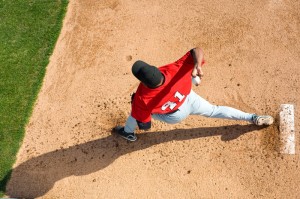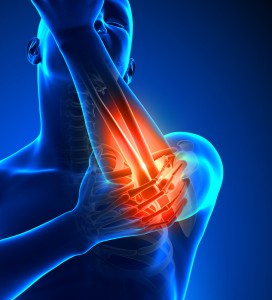What is a throwing injury?
Overhand throwing actually places pressure on the shoulder and specifically to all of the anatomy which tries to keep your sugar stable. Athletes who throw place this high level of stress on their shoulder repeatedly which can lead to overuse in the high range of shoulder throwing injuries. Although throwing often occurs in baseball pictures, throwing injuries can also be seen athletes who participate in any type of sport which requires repetitive over motion which can include track and field events, tennis, and volleyball.
How does a throwing injury take place?
Your shoulder is a ball and socket joint with a lot of connective tissue whose job it is to keep everything in place. There are three bones which meet and need to be supported by the tendons and tissue. But if excessive strain takes place, these areas can weaken and cause injury.
What are the causes of throwing injuries?
When athletes repeatedly throw at high speeds in places significant stress on the structures which keep the ball and socket joint of your shoulder stabilized. There are five phases which make up the pitching motion and it is the final follow-through which places the greatest force on your shoulder. When one structure of your body is weekend because of repetitive stress, in this case the ligament structure of your shoulder, the other structures around it have to handle the overload. And as a result, shoulder injuries take place from throwing at a high rate.
What are the most common throwing injuries?
SLAP injuries are one of the most common to a throwing athlete. This injury is a tear which takes place in the front and the back attachment points of your shoulder.
Bicep tendinitis is another injury which is common. The repetitive throwing motion can inflame the upper bicep tendon. This can cause bicep tendinitis. Pain that you feel in the front of your shoulder and regular weakness in your arm can be a symptom of bicep tendinitis. Occasionally the damage that tendinitis brings can result in significant tear in the bicep. If the bicep tendon is torn you will feel sharp and severe pain in your upper arm and you may hear a popping noise from the actual tear.Another common injury is rotator cuff tendinitis.
What are the treatment options for throwing injuries?
 If you leave throwing injuries untreated it can only complicate your condition. Nonsurgical treatment options are available. Your doctor my first suggest that you modify your activities so as to reduce the activities that would otherwise cause your symptoms. You can also apply ice packs to the shoulder in order to reduce any inflammation. Regular anti-inflammatory drugs like ibuprofen can relieve your pain and can also relieve the inflammation.
If you leave throwing injuries untreated it can only complicate your condition. Nonsurgical treatment options are available. Your doctor my first suggest that you modify your activities so as to reduce the activities that would otherwise cause your symptoms. You can also apply ice packs to the shoulder in order to reduce any inflammation. Regular anti-inflammatory drugs like ibuprofen can relieve your pain and can also relieve the inflammation.
If your injury is severe you can find anti-inflammatory medication and prescription strength forms. Changing your throwing position or your body position and help to alleviate excessive stress on your shoulder structures. Physical therapy is another option for treatment which can improve your range of motion and strengthening the muscles which support your joint. Your doctor might recommend specific physical therapy exercises for your specific condition.
The top orthopedic surgeons in Phoenix offer exceptional nonoperative and operative treatment options for throwing injuries. Dr. Adam Farber is an expert in the management of throwing injuries, call today!



